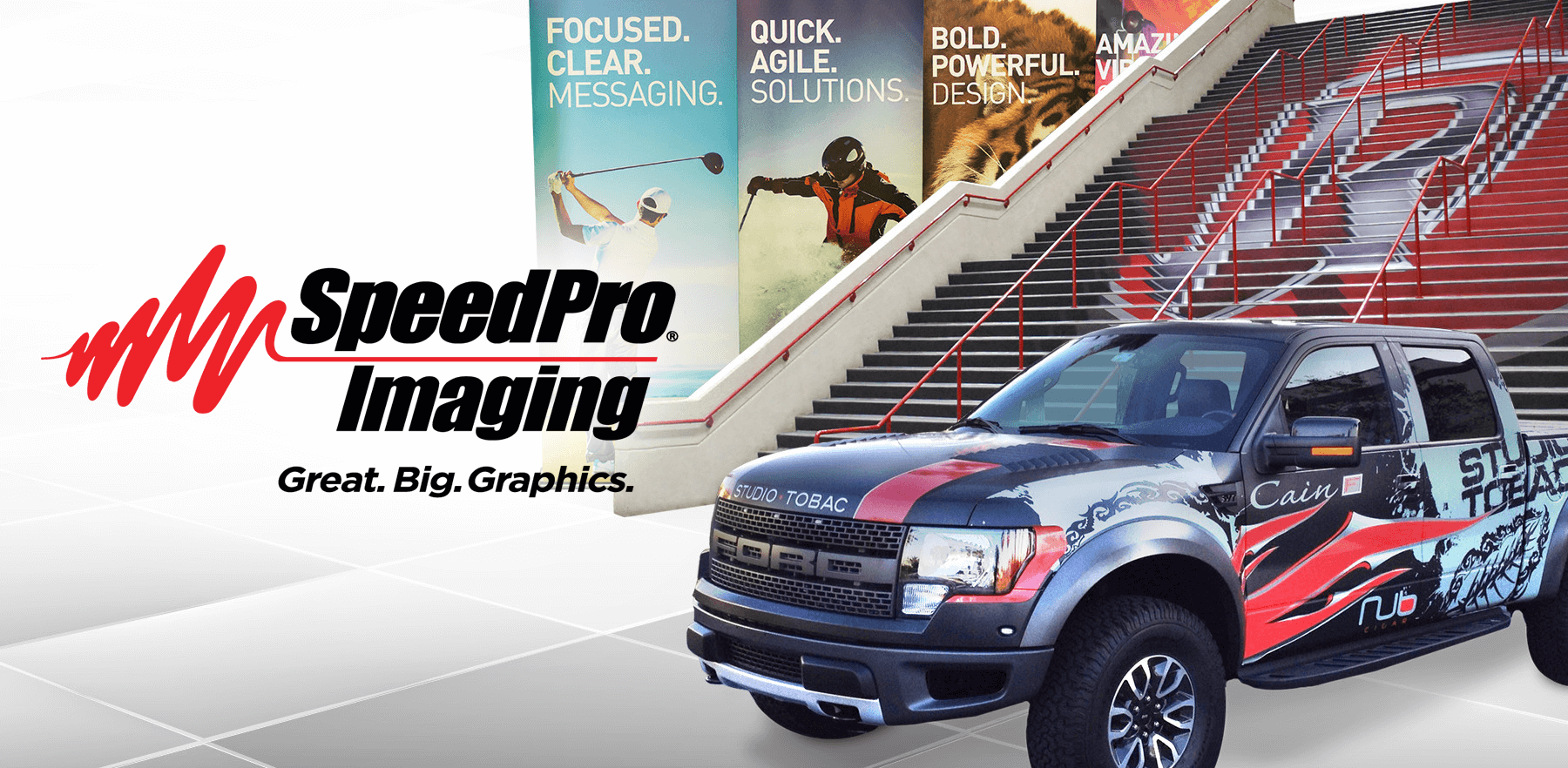
The Differences Between a Full and a Partial Vehicle Wrap
AUGUST 8, 2019| SpeedProCategories
Vehicle GraphicsIf you’ve driven down the highway or even down a backroad in your neighborhood and seen a car with a perfect advertisement or logo on the side panels, you’ve probably seen a vehicle wrap. These vinyl wraps are used as an advertising method on cars, boats, trains, trucks, motorcycles and other vehicles. They’re like mobile billboards that bring the message down to the driver’s level.
But what’s the difference between a full and a partial vehicle wrap, and which should you choose for your business?
Vehicle Wrapping as Advertising
Vehicle wraps have the lowest cost per impression, from an ROI standpoint. They can reach more consumers at a lower cost per thousand impressions than any other form of advertising, and transit advertising accounts for between 16% and 18% of all revenue in the out-of-home advertising industry.
Why is this kind of advertising so effective?
Consumers spend an average of 18 hours in their vehicles every week between shopping, eating out, and commuting to and from work. Some 70% of shoppers have stated that seeing an out-of-home ad will likely influence their purchasing decision in the future.
The best part of using wraps as advertising is their longevity. Instead of a billboard or a magazine ad that may only run for a limited amount of time, a vehicle wrap will be seen every day for years to come, as long as the wrap is well-maintained. Transit advertising provides some of the best returns-on-investment in the industry.
Full Wraps and Partial Wraps
In order to implement a transit advertising plan, first you need to know which graphics are best for your company and your customers.
There are two options when it comes to transit advertising: full wraps and partial wraps. The former covers the entire vehicle from bumper to bumper, while the latter only covers a portion of the vehicle.
Full Wraps — Benefits
With a full wrap, every part of the vehicle can be covered, from the hood and trunk to the sides, roof, bumpers, and even the windows with perforated vinyl if it’s permitted by law in your state. On large vehicles like fleet trucks, the roof usually isn’t covered because no one will be able to see it, so it may cost extra to cover the roof on smaller vehicles.
A full wrap has a number of different benefits, starting with the fact that it turns your commercial vehicle into a mobile billboard for your business. Wraps make the vehicle captivating and difficult-to-miss on the road and allow you to change the color of the car or truck without violating your lease agreement. They can be more expensive than partial wraps, but they’re an excellent choice for companies with larger advertising budgets and a long-term investment strategy.
Partial Wraps — Benefits
Partial wraps focus on the central portions of the vehicle such as the hood, sides and trunk, and may cover anywhere from one-quarter to three-quarters of the car. These wraps let you incorporate the original color of the car into your design, but the transitions between wrap and paint are designed to be nearly invisible.
These tend to be cheaper than full wraps and easier to change if you need to update your marketing messages. If you don’t want to change the color of your car or are just advertising a special event or limited-time promotion, partial wraps become the ideal choice.
The Perfect Wrap for Your Business
Whether you opt for a partial or full vehicle wrap, both styles can offer unmatched marketing reach and longevity. The best choice for your company will depend entirely on your goals. Work with SpeedPro to design the perfect wrap based on your advertising needs and goals. Contact us today for a quote.

















![The Differences Between a Full and a Partial Vehicle Wrap [Infographic]](https://www.speedpro.com/wp-content/uploads/2019/08/speedpro-mg-full-vs-partial-vehicle-wrap.png)